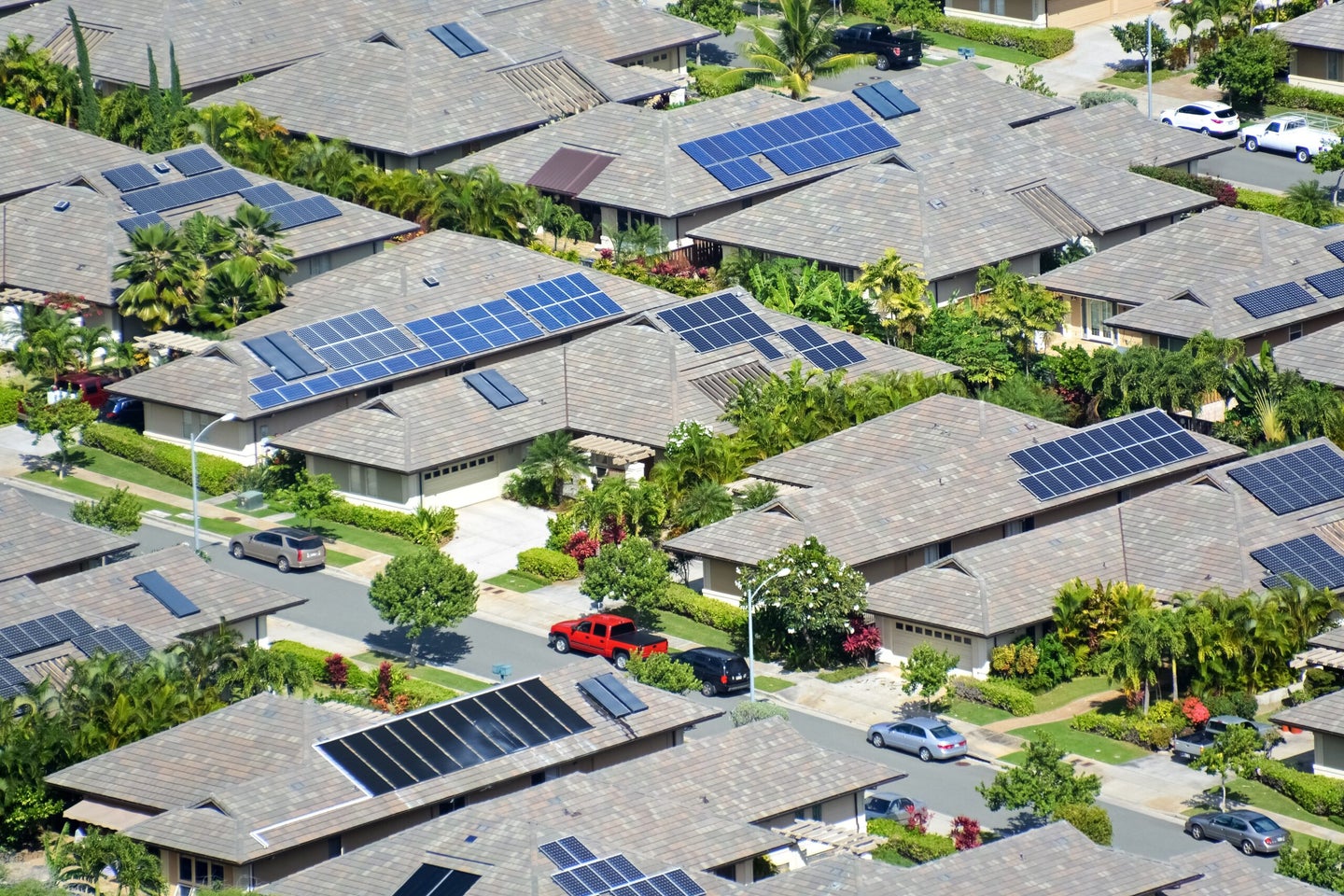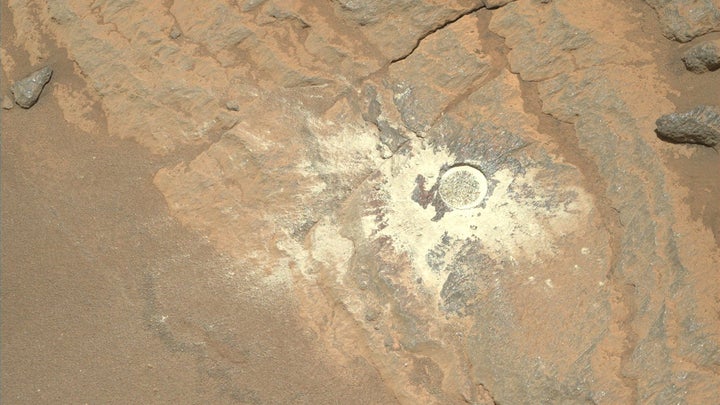
What your elected leaders have been up to at COP26
Republicans and Democrats have both made appearances in Glasgow for the giant climate conference.
- Science
- Environment
 Hawaii is one of several states aggressively pushing for tougher climate policy. Jeremy Bezanger on Unsplash SHARE
Hawaii is one of several states aggressively pushing for tougher climate policy. Jeremy Bezanger on Unsplash SHARE After the Trump administration bowed out of COP25 in 2019, the United States is back at the international table for COP26. But it’s not just the Biden administration representing the country at the climate talks this year.
var siteRootDomainParts = window.location.host.split("."); var siteRootDomain = window.location.host; if ( siteRootDomainParts.length >= 2 ) { siteRootDomain = siteRootDomainParts[siteRootDomainParts.length - 2] + "." + siteRootDomainParts[siteRootDomainParts.length - 1]; } cnxps.cmd.push(function () { cnxps({ playerId: "d0aa10a3-c0c5-48e8-865e-f5d73ae74404", customParam1: window.empire.apps.ads.targeting.pageId + "", customParam2: window.empire.apps.ads.targeting.section + "", customParam3: window.empire.apps.ads.targeting.keywords + "", settings: { advertising: { macros: { cust_params: "site=" + siteRootDomain + "&targeting_article=" + window.empire.apps.ads.targeting.externalId + "&targeting_section=" + window.empire.apps.ads.targeting.section + "&targeting_keyword=" + window.empire.apps.ads.targeting.keywords + "&article=" + window.empire.apps.ads.targeting.pageId, article: window.empire.apps.ads.targeting.pageId, category: window.empire.apps.ads.targeting.section, keywords: window.empire.apps.ads.targeting.keywords, } } } }).render("404a5343b1434e25bf26b4e6356298bc"); });Everyone from cabinet secretaries to members of congress to state leaders to mayors have put in appearances at COP26, either to signal a commitment to more aggressive climate action at the local level, or to present a competing plan for how the US should proceed.
Six governors, all Democrats and members of the US Climate Alliance, a group that promotes local climate policy,, have attended: Hawaii’s David Ige, Illinois’ J.B. Pritzker, Louisiana’s John Bel Edwards, New Mexico’s Michelle Lujan Grisham, Oregon’s Kate Brown, and Washington’s Jay Inslee. The governors largely represent states that set decarbonization timelines long before the US as a whole.
[Related: A quick guide to the climate jargon you’ll hear at COP26.]
Washington, New Mexico, and Louisiana all have plans to eliminate or offset all emissions by 2050. Illinois has a plan to decarbonize its grid by 2050. Hawaii is phasing out coal generation by next year, replacing it with solar and storage, and plans to be fully carbon neutral by 2045. Oregon passed a law this summer requiring utilities to fully end emissions from its electricity supply by 2040. On Sunday, Washington governor Jay Inslee signed an executive order requiring all public vehicles in the state to be electric by 2040.
Their presence is also an illustration of how US climate policy, from decarbonization of the power grid to electric vehicle requirements, has been driven by state and local initiatives in the absence of federal legislation. “We owe a lot of the success, frankly, that we’re having in this administration to [Governor Jay Inslee’s] leadership,” said David Turk, the Deputy Secretary of Energy, at a COP26 panel on Monday.
Governors took the opportunity to tout those plans, and to make the case that the US could be a dependable partner to the rest of the world based on the actions of states. “A commitment from a large state like Illinois is impactful,” said Pritsker at that panel. “And we’re coming from behind, to be frank with you. We’re known to be in the Rust Belt, known to be an industrial state, and in previous years didn’t have a climate policy.”
A 2020 study from think tank the Brookings Institution found that pledges in 45 US cities would lead to a carbon reduction of six percent from 2017. But that’s just a drop in the bucket when compared against overall growth in emissions from the rest of the country.
At the same time, a group of Republican congressmen who belong to the Conservative Climate Caucus, a recently-formed group of legislators interested in “conservative climate solutions” , are presenting an alternative climate plan for the US and the world. But the caucus is focused on promoting the fossil fuel industry, saying that “fossil fuels can and should be a major part of the global solution,” a position that is, at present, technologically incompatible with rapid decarbonization.
The caucus is led by Utah Republican John Curtis.“Our first goal is to show the world that Republicans do care; that we’re there, that we’re engaged, that we want a seat at the table and we feel like we have good ideas as well,” he told Inside Climate News. By extension, he said, the US as a whole is invested in avoiding climate disaster. But many of the Caucus’ most influential members, like Cathy McMorris Rodgers of Washington State, and Garrett Graves of Louisiana, have fiercely opposed the federal “Build Back Better” package, which would invest half a trillion dollars to reduce emissions, but still is only a partial step towards warding off 1.5 degrees of warming.
Curtis imagines bipartisan agreement on investments in hydrogen and nuclear technology, both of which are pitched as solutions for hard-to-decarbonize emissions like shipping, steel production, and electricity backstops, but face massive technological hurdles. But fossil fuels like natural gas may be points of domestic and international tension he said.
“In Russia, in India, natural gas could be the low-cost leader immediately and cause them to reduce their greenhouse gas emissions,” he said. “I’m willing to join my Democratic colleagues in their calls for more control on methane. That’s one where we’d say, ‘Hey, work with us on natural gas, and we’ll work with you on methane.’”
That’s not the full picture: natural gas and methane are by and large the same thing. Currently, the fuel about as dirty as coal, because when it leaks into the atmosphere, it’s a much more potent greenhouse gas over the short run. Plugging those leaks could reduce, but not eliminate, emissions, but fossil fuel companies have resisted tighter regulations.
[Related: The people hit worst by climate change get the least airtime at COP26.]
But these ideas overlap with some ideas coming from Democrats representing oil and gas producing states including Louisiana, New Mexico, and California. According to the New Mexico Political Report, New Mexico governor Lujan Grisham has emphasized requirements in New Mexico that fossil fuel producers cut 98 percent of methane leaks by 2026, mostly by tough restrictions on venting and flaring excess gas.
And when it comes to carbon capture and storage, another major focus of COP26, the Conservative Caucus could have a lot in common with John Bel Edwards, the governor of Louisiana. Edwards wants the rapidly eroding state to decarbonize by 2050, and cut a quarter of its carbon emissions within four years. “No state in our nation is more affected by climate change than Louisiana, but it is also true that no state is better positioned to be part of the solution to the problems facing our world,” Edwards said in a statement in late October.
But Louisiana is unique in that about two thirds of its greenhouse gas emissions come from industries like oil extraction and refining or chemical manufacturing, and current plans show no signs of slowing the roll. That leaves it with one path: carbon capture, which remains unsuccessful at large scale, and which some criticize as subsidies for high-emitting industries.
Local officials have showed up at COP26 leading with a message that the United States as a whole is invested in the climate, in a way that it couldn’t under the previous administration. That’s not the full picture. Local initiatives are moving the country forward, but politicians aren’t representing the same interests, making it hard for federal policy to meet its international commitments.
 Philip Kiefer
Philip Kiefer covers ecology, the climate, public health, and more from New Orleans. His work has also appeared in Outside, National Geographic, and Sierra.
climate change Environment greenhouse gases politics sustainability MORE TO READIntroducing Jobbguru: Your Gateway to Career Success
The ultimate job platform is designed to connect job seekers with their dream career opportunities. Whether you're a recent graduate, a seasoned professional, or someone seeking a career change, Jobbguru provides you with the tools and resources to navigate the job market with ease.
Take the next step in your career with Jobbguru:
Don't let the perfect job opportunity pass you by. Join Jobbguru today and unlock a world of career possibilities. Start your journey towards professional success and discover your dream job with Jobbguru.
Originally posted on: https://www.popsci.com/science/elected-officials-us-cop26/


